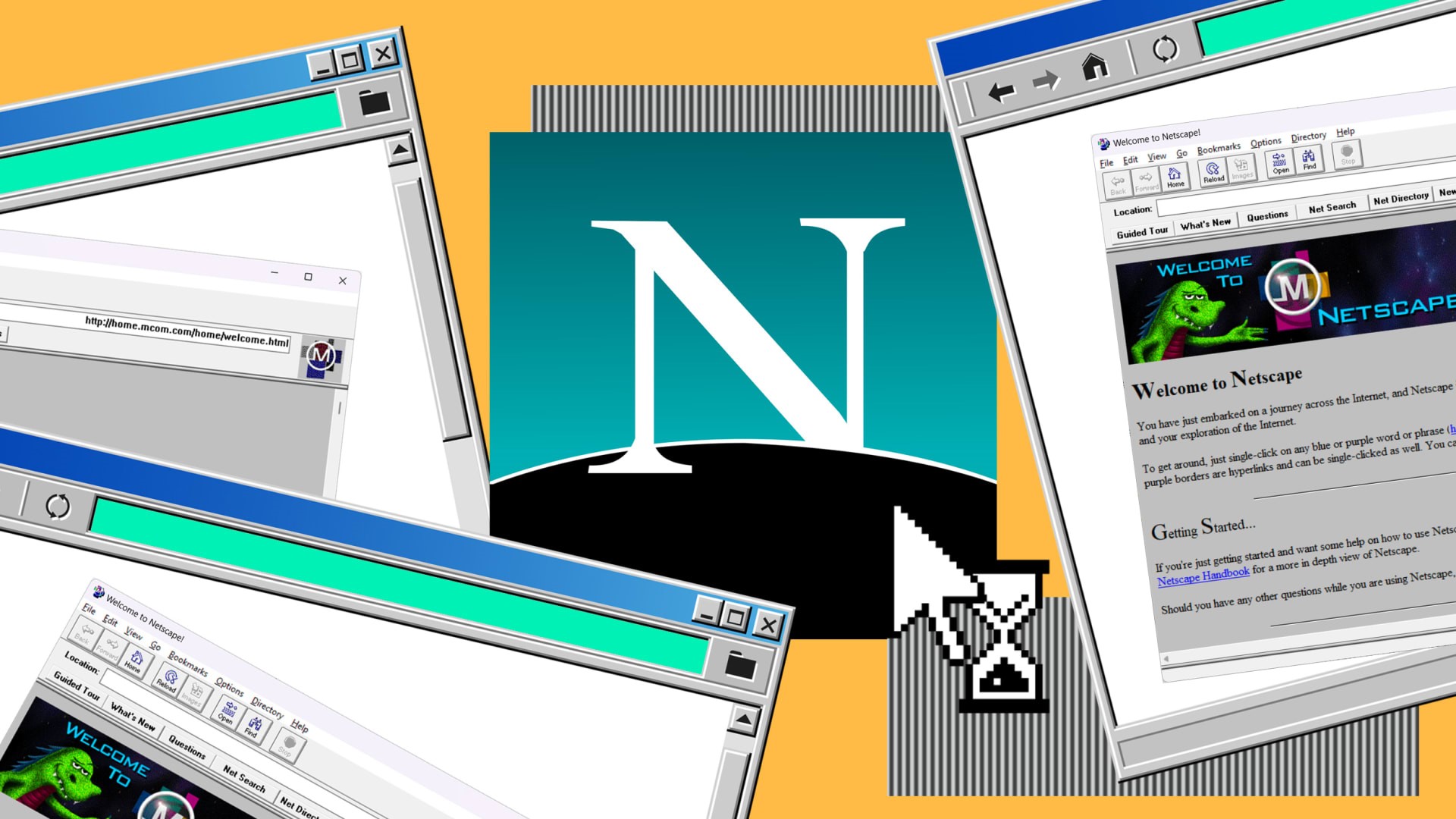Netscape at 30: What the defunct browser can tell us about the modern internet
June 19, 2024
Netscape at 30: What the defunct browser can tell us about the modern internet
I tried running Netscape Navigator 0.92 on a modern PC and learned a lot along the way.
BY Jared Newman
What can you do with a 30-year-old version of Netscape Navigator on a modern computer?
From a practical standpoint, not much. Vintage web browsers, if you can even get them running in the first place, are incompatible with most websites today. Even when a website loads, it probably it won’t look right, with weird formatting, misplaced images, and a jumbled mess of unrecognizable text around the actual page content.
But given 2024 marks the 30-year anniversary of Netscape’s launch—a release that kicked off the first era of browser wars—I was determined to use the browser to visit as many sites as possible. That endeavor ended up being a great learning experience, and a testament to how much the web (and the web browser) has changed over the past three decades.
Installing Netscape Navigator 0.92
Netscape was the first commercial attempt at a web browser, and an immediate successor to Mosaic, which Marc Andreessen and Eric Bina developed in the early ’90s as programmers at University of Illinois at Urbana–Champaign’s National Center for Supercomputing Applications. Netscape was a hugely influential browser, leading the way on new features and serving as a gateway to the broader internet for folks who previously used portals such as America Online and CompuServe. By 1996, the company claimed to have 38 million users.
Netscape’s runaway popularity compelled Microsoft to build Internet Explorer and bundle it with Windows, eventually prompting the Department of Justice’s antitrust lawsuit against Microsoft in 1998. Netscape just couldn’t keep up with Microsoft on browser development, and a series of decisions intended to compete—releasing a new open-source codebase, launching a suite of additional products such as an email client and web editor—only led to further stagnation. Netscape was already on a path to irrelevance when AOL acquired the company for $4.2 billion later that year, though it continued to ship new versions until 2008. (Its open-source code, meanwhile, formed the basis for Mozilla Firefox.)
Thanks to software programmer Jamie Zawinski, you can easily download old versions of Netscape and its predecessor, Mosaic. Zawinski, who was one of Netscape’s first employees, hosts a personal archive of Netscape releases, most of which he’s been saving all these years, and he wrote a blog post in 2008 on how to run them.
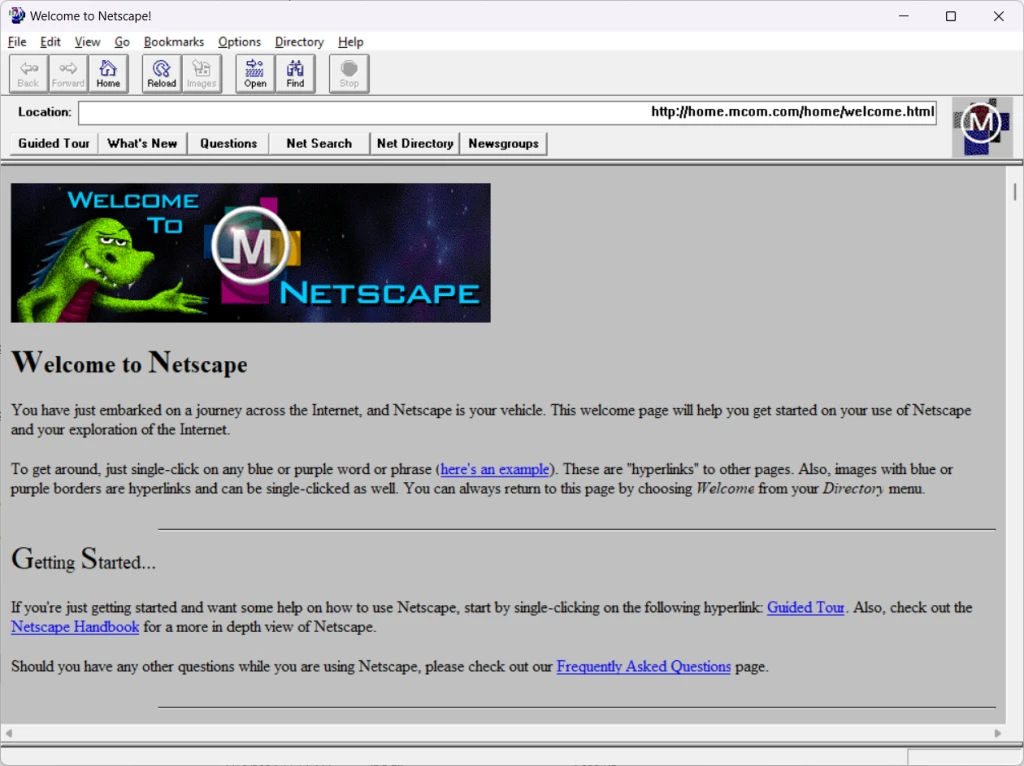
The most straightforward option is Netscape 0.9.2, which is available as a ready-made Win32 executable file. Open the file, and you’ll be browsing like it’s 1994, complete with the original “Welcome to Netscape” landing site.
In an email, Zawinski tells me that the old site hides an Easter egg: Everything loads at 56 Kbps. In an old browser such as Netscape, that allows the site’s .GIF image files to load line-by-line, just like the old days.
Remembering the old web
Running Netscape 0.9.2 is also a reminder of what it was like to discover the World Wide Web 30 years ago, before Google and Facebook became its biggest gatekeepers.
Unlike today’s browsers, Netscape has no built-in search function, and typing into the address bar only works for specific URLs. To help newcomers make sense of the internet, Netscape curated its own informational pages, with navigation buttons built into the browser itself. Click around, and you’ll find an explanation of what the internet is, a monthly log of new websites added to the internet, directories for browsing the web by topic, and links to some rudimentary search engines such as Lycos.
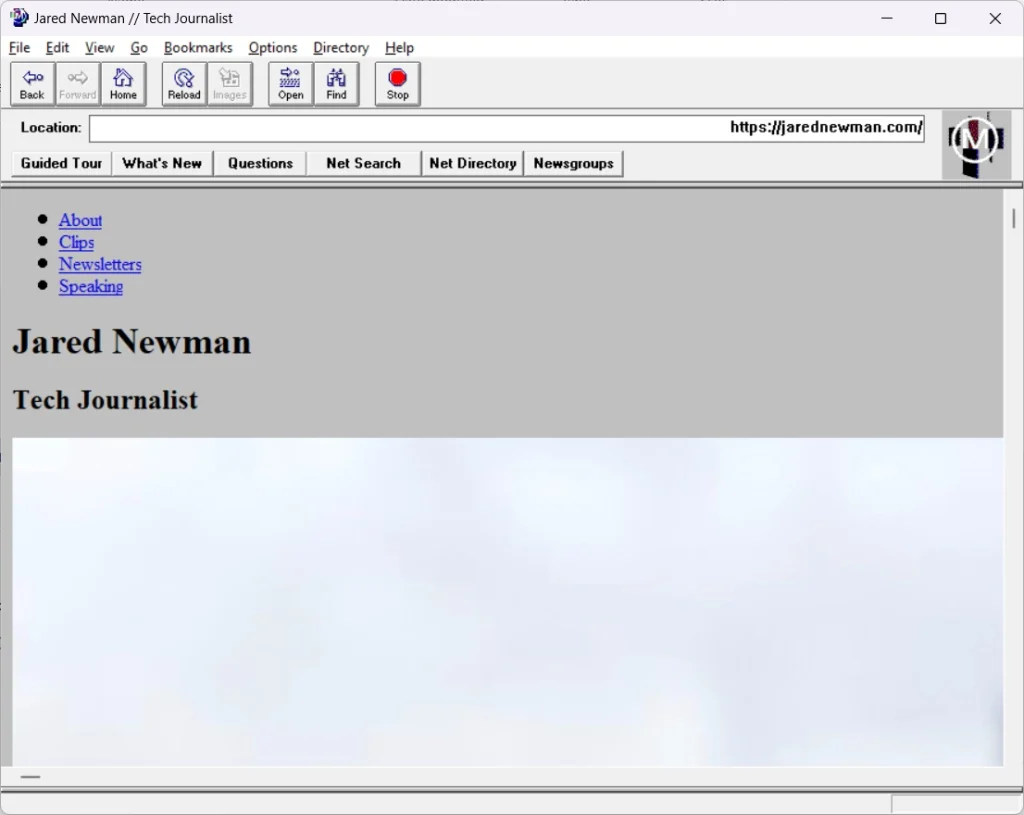
Of course, many of the browser features we now take for granted are missing as well. Browser tabs didn’t arrive until the late 1990s, and certain keyboard shortcuts have unexpected behaviors (Ctrl+A saves bookmarks rather than acting as an option to select all). Closing the browser even dumps your entire history, as if you were browsing in Incognito Mode the entire time.
But the one difference that struck me most was Netscape’s “Open” button, which shows a pop-up dialog box for loading a specific URL. In modern browsers, the address bar is our primary point of navigation, and Google is often the intermediary even when we know where we’re going. (The two most popular Google searches last year were “youtube” and “facebook” according to Semrush.) The “Open” button is a relic from the pre-search era, and modern browsers have gotten rid of it.
Old browser meets modern web
While the old home.mcom.com site works in old versions of Netscape now, that wasn’t always the case.
For years, the URL redirected to netscape.com, and that site in turn redirected to one of AOL’s landing pages. Zawinski worked with a contact at AOL to restore the old site at its original URL, and it’s now hosted by Yahoo, which merged with AOL under Verizon in 2017 (and is now owned by a private equity firm).
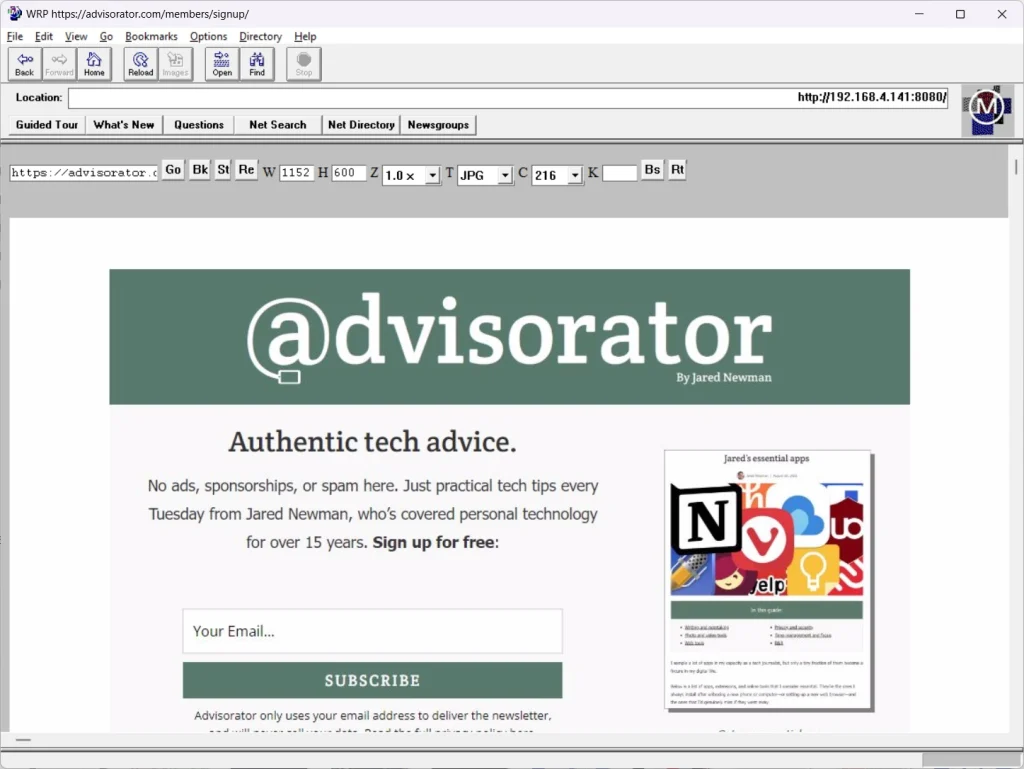
Making the site compatible with the oldest Netscape versions required additional work. Prior to 1997, web browsers used the HTTP/1.0 protocol, which didn’t support the “Host” header that web servers now use to host multiple domains under one IP address. HTTP/1.0 also didn’t support the headers that let a browser and website negotiate a site’s character set, resulting in an error message.
As a workaround, the mcom.com site is now hosted under its own IP address, and Zawinski says he worked with AOL and Yahoo to point their DNS host names to his server. He then configured his server not to send any headers that vintage Netscape versions wouldn’t recognize. All of which means that if you install Netscape 0.92 today, it should at minimum be able to load the browser’s original welcome page and informational pages.
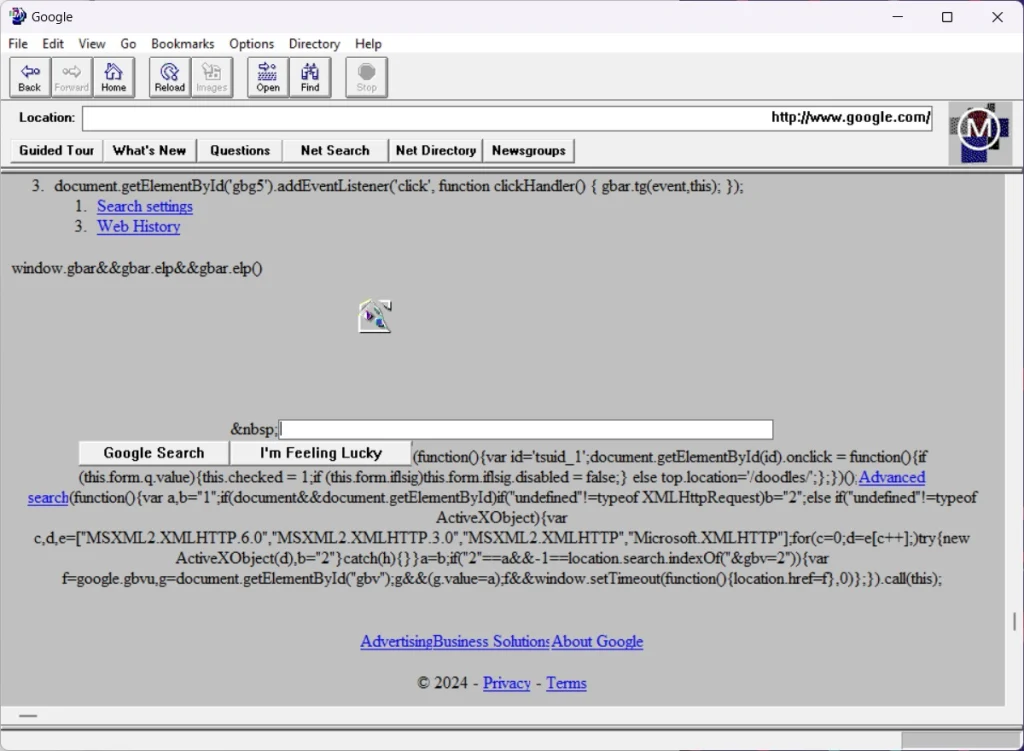
Unfortunately, most modern websites aren’t so accommodating. Google, for instance, throws up a “No Viewer Configured” error, due to the aforementioned lack of header support. More importantly, most websites now use TLS encryption as a security measure and no longer support unencrypted HTTP versions. Netscape didn’t start supporting encrypted pages until 1995, and TLS didn’t arrive until four years later, which means Netscape 0.92 is incompatible with nearly any site you’d want to visit.
The quest for more websites
Undeterred, I figured there must be a way to make Netscape work with modern websites. And that’s when I went down some major rabbit holes.
The crudest option is to simply download individual web pages in a different browser, then load the local HTML file in Netscape. This is the only way I was able to view Fast Company‘s home page, but it obviously wasn’t ideal.
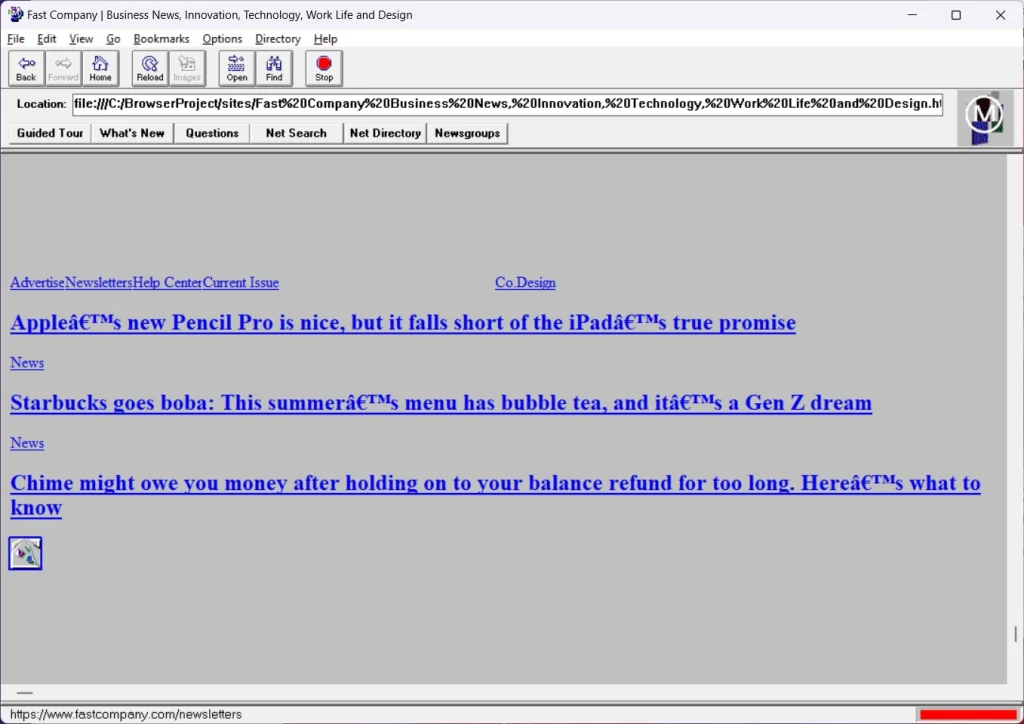
Another approach comes from Zawinski himself. In his 2008 blog post on running old browsers, he linked to a Perl script for a proxy server that translates between the old HTTP/1.0 protocol and the modern web’s HTTP/1.1 protocol, allowing Netscape 0.92 to properly load headers and character sets. I have never used Perl before, but I found some instructions, set up the proxy on my Mac Mini, then configured Netscape to route all traffic through it.
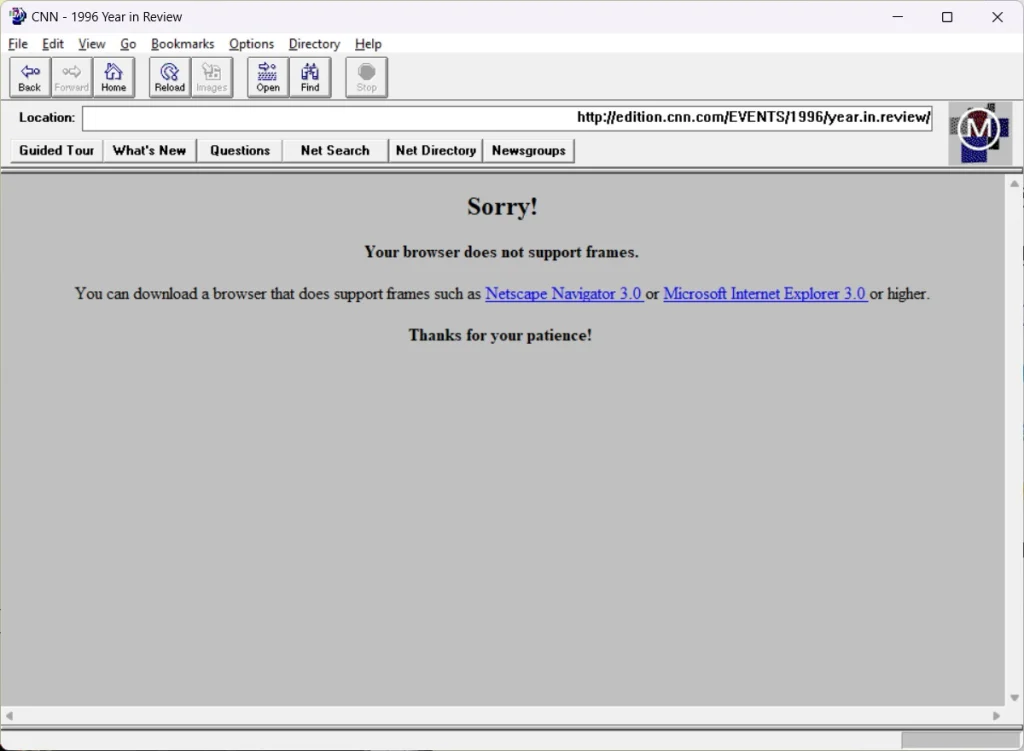
That worked for a handful of sites. I now had access to Google’s http version, for instance, along with Bob Dole’s 1996 campaign website, CNN’s O.J. Simpson trial news hub, and a website too vulgar to mention by name, among other things.
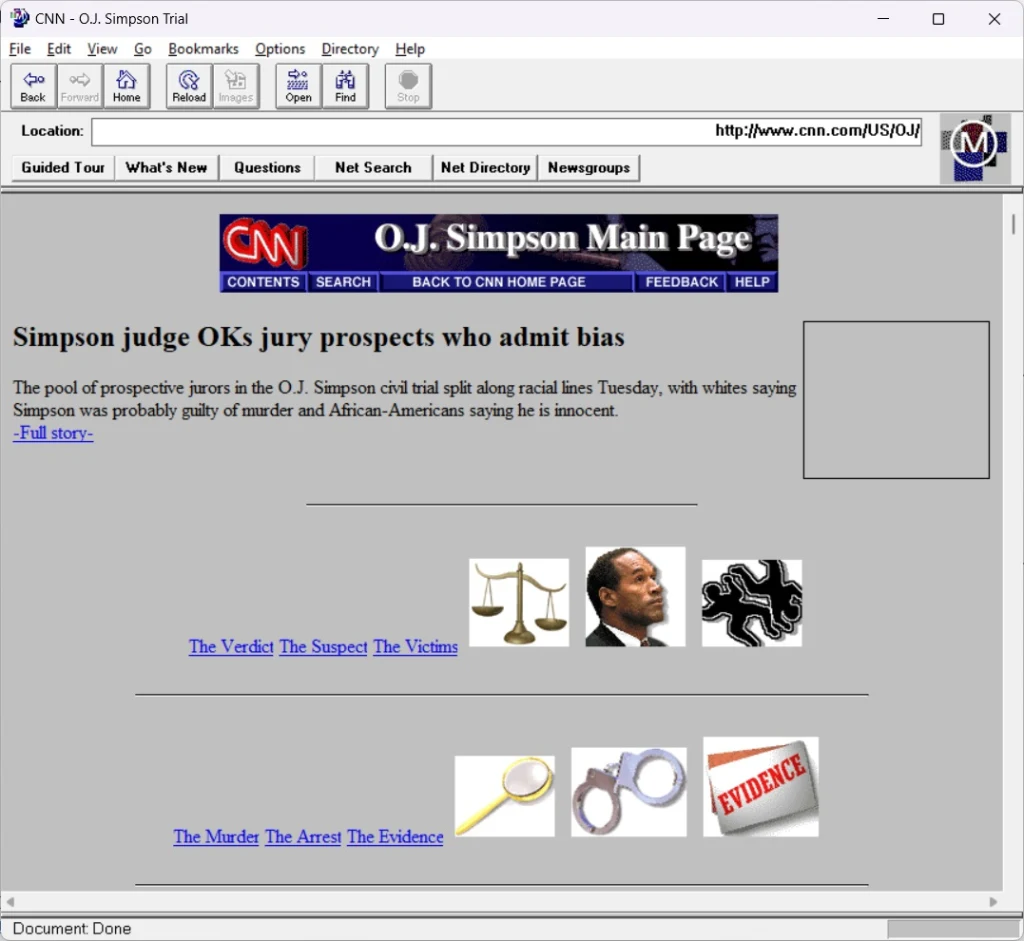
And yet, the vast majority of the modern web remained unavailable in my vintage browser due to its lack of HTTPS support. If I tried to load my own website, for instance, I’d get an error saying the document had moved.
That led me to a post on StackExchange that suggested setting up a forward HTTP-to-HTTPS proxy in nginx, another tool with which I had no experience. After fumbling my way through more online tutorials, I reconfigured Netscape’s proxy settings, and voilà, I was able to load my own website, the Techmeme home page, and more.
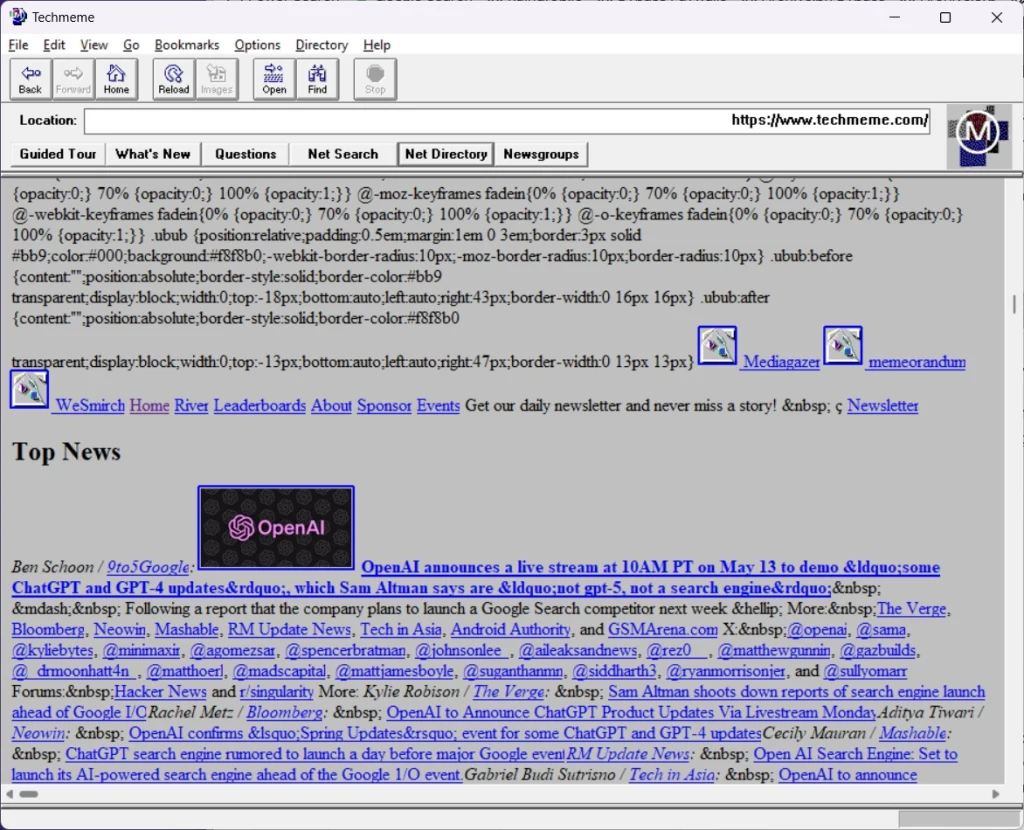
They didn’t look particularly good, though. Without support for JavaScript (which Netscape pioneered in 1995) and CSS (which Internet Explorer was the first to support in 1996), the pages that worked would show a whole bunch of extraneous code at the top and bottom.
Meanwhile, many other websites still wouldn’t load at all due to a lack of header support. My best guess is that the second proxy didn’t solve the problems addressed by the first proxy, or vice versa, and I couldn’t figure out a way to connect the two together. That’s about when I gave up on the whole endeavor.
The easier way
After hours of experimentation, I realized that the web has just come too far to work well in an old browser—both for better and for worse. While the earliest websites relied on just a small amount of HTML code, modern websites are more like full-blown applications, with their own interactivity, sophisticated layouts, and elaborate ways of tracking your every move. You can patch an old browser to solve some basic compatibility issues, but it still won’t be designed for what the web has become.
But if you’re still desiring a taste of the classic web, there are a couple of other approaches that may yield better results.
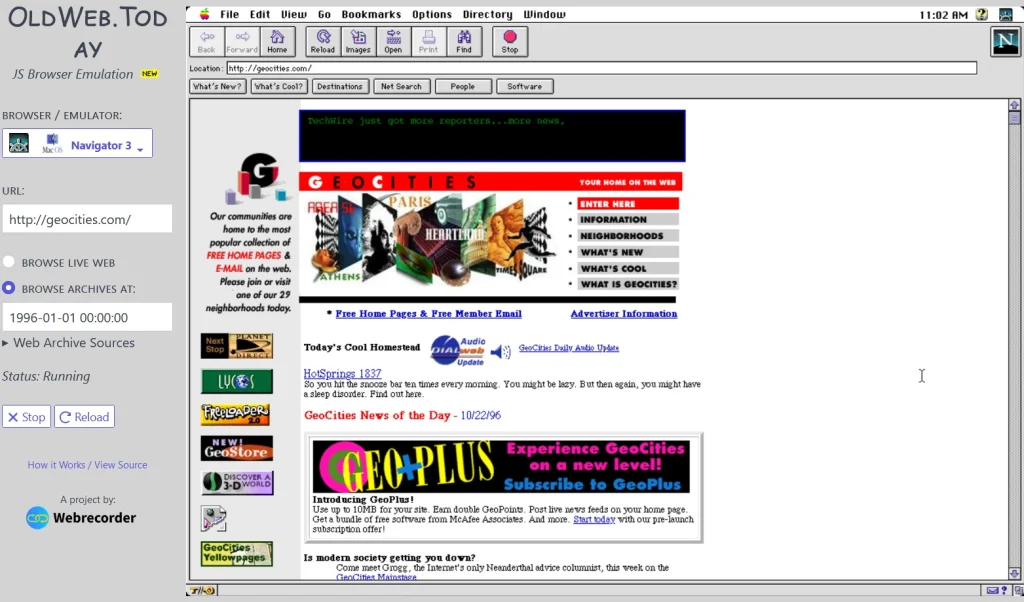
The simplest option is oldweb.today, which emulates an old version of MacOS running a variety of browsers. It can load pages from the live web or from the Internet Archive, though I’ve found it to be unreliable.
A more complicated approach is to install the Web Rendering Proxy, a free program that renders web pages on its own and displays them as images inside any web browser. When used with Netscape 0.92, most sites should look just as they do in Google Chrome today.
Just be aware: In both cases, you’ll be skipping past all the painful evolution that got the web to where it is now.
ABOUT THE AUTHOR
(26)


